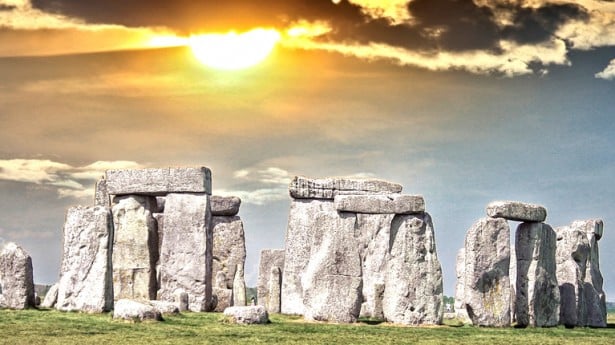Art World
Stonehenge May Have Been Built in Wales First According to New Study
Archaeologists found the quarry where the stones were sourced.

Archaeologists found the quarry where the stones were sourced.

Henri Neuendorf

Stonehenge, the prehistoric monument located in Wiltshire, England, never ceases to fascinate experts who research new theories and make discoveries that change the way we see and understand the mythical ruin. Now, archaeologists have found several recesses in rock formations in Wales that match the size and shape of Stonehenge’s bluestones, leading to theories that the monument may have been erected in Wales first, before being moved to its present site in Salisbury Plain.
The researchers also discovered evidence of what they described as “a loading bay” from where the massive boulders could have been dragged away.
The findings were published in the journal Antiquity by a team of specialists from UCL, and the universities of Manchester, Bournemouth, Southampton, and others.
“We have dates of around 3400 BC for Craig Rhos-y-felin and 3200 BC for Carn Goedog, which is intriguing because the bluestones didn’t get put up at Stonehenge until around 2900 BC,” Professor Mike Parker Pearson, director of the project and professor of British later prehistory at University College London, told the Guardian.
“It could have taken those Neolithic stone-draggers nearly 500 years to get them to Stonehenge, but that’s pretty improbable in my view. It’s more likely that the stones were first used in a local monument, somewhere near the quarries, that was then dismantled and dragged off to Wiltshire.”
Parker Pearson described the discovery as “amazing.” He added that “Normally we don’t get to make that many fantastic discoveries in our lives, but this is one.”

Archaeologists think they may have found the quarry where the rocks were sourced from.
Photo: via Shutterstock.
The researchers describe the transport of 80 two-ton monoliths that make up Stonehenge as one of the most remarkable achievements in Neolithic times. The study suggests that the huge boulders were dragged by oxen on wooden sledges on top of rail-like tree trunks.
Parker Pearson explained that similar events in early societies often brought together different groups of people from far away, citing early inhabitants of Madagascar as an example.
“One of the latest theories is that Stonehenge is a monument of unification, bringing together people from across many parts of Britain,” he said.